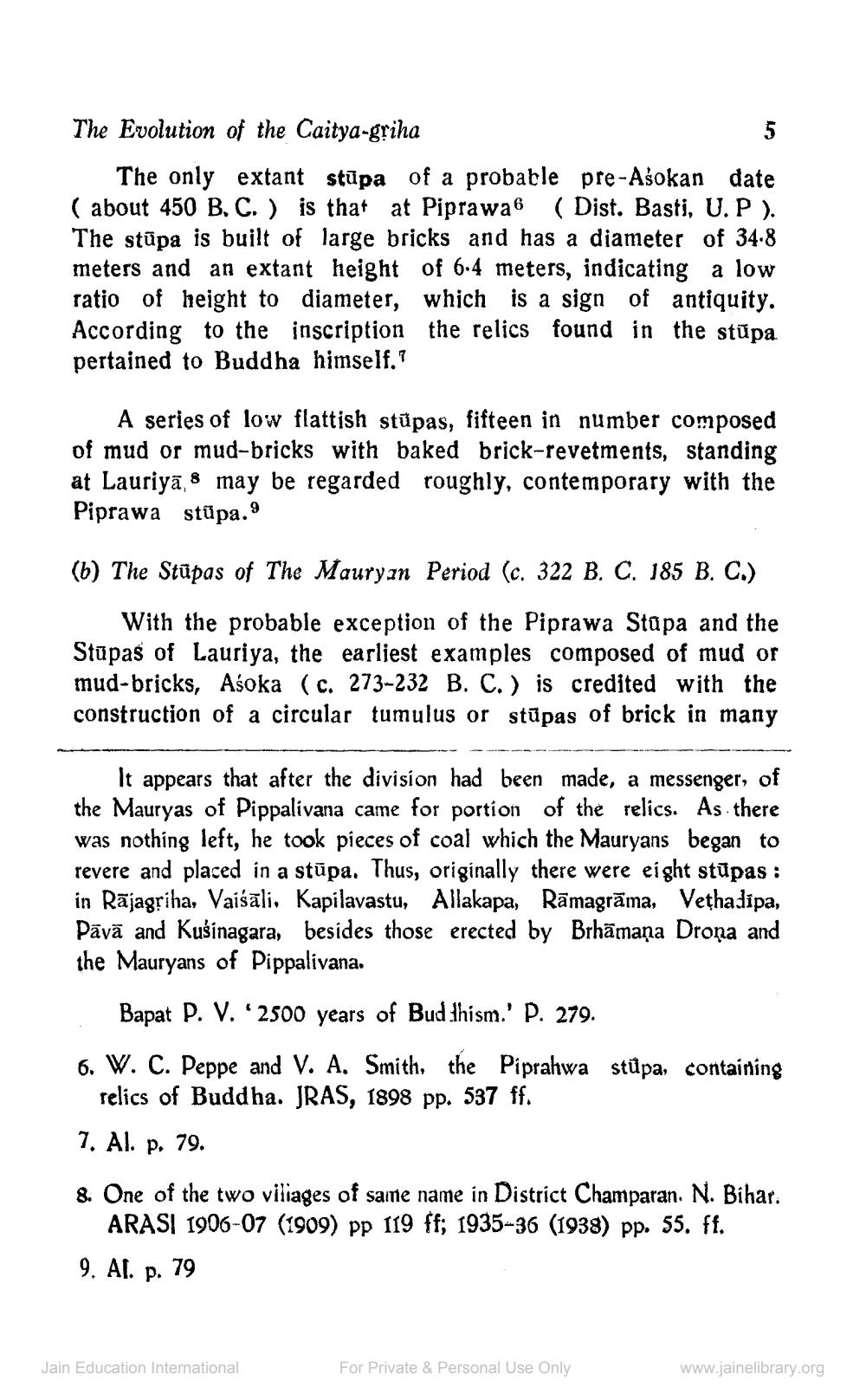________________
The Evolution of the Caitya-griha
The only extant stūpa of a probable pre-Ašokan date ( about 450 B, C. ) is that at Piprawa6 (Dist. Basti, U. P ). The stūpa is built of large bricks and has a diameter of 34.8 meters and an extant height of 6.4 meters, indicating a low ratio of height to diameter, which is a sign of antiquity. According to the inscription the relics found in the stūpa. pertained to Buddha himself."
A series of low flattish stūpas, fifteen in number composed of mud or mud-bricks with baked brick-revetments, standing at Lauriyā, 8 may be regarded roughly, contemporary with the Piprawa stūpa.9
(6) The Stūpas of The Mauryan Period (c. 322 B. C. 185 B. C.)
With the probable exception of the Piprawa Stapa and the Stūpas of Lauriya, the earliest examples composed of mud or mud-bricks, Asoka (c. 273-232 B. C. ) is credited with the construction of a circular tumulus or stūpas of brick in many
It appears that after the division had been made, a messenger, of the Mauryas of Pippalivana came for portion of the relics. As there was nothing left, he took pieces of coal which the Mauryans began to revere and placed in a stūpa. Thus, originally there were eight stūpas : in Rājagpiha, Vaiśāli. Kapilavastu, Allakapa, Rāmagrāma, Vethadipa, Dāvā and Kušinagara, besides those erected by Brhāmaņa Drona and the Mauryans of Pippalivana.
Bapat P. V. '2500 years of Bud thism.' P. 279. 6. W. C. Peppe and V. A. Smith, the Piprahwa stúpa, containing
relics of Buddha. JRAS, 1898 pp. 537 ff. 7. Al. p. 79. 8. One of the two viliages of same name in District Champaran. N. Bihar.
ARASI 1906-07 (1909) pp 119 ff; 1935-36 (1938) pp. 55. ff. 9. Al. p. 79
Jain Education International
For Private & Personal Use Only
www.jainelibrary.org




